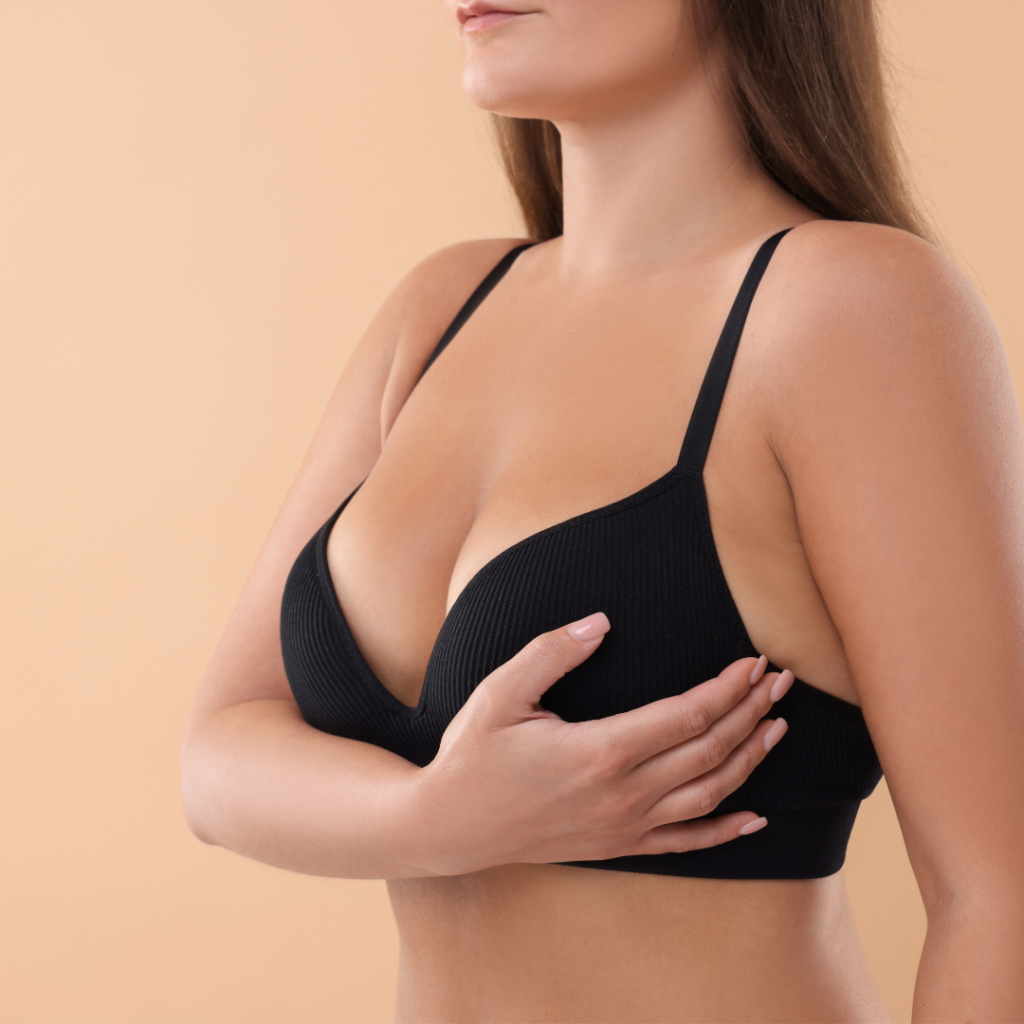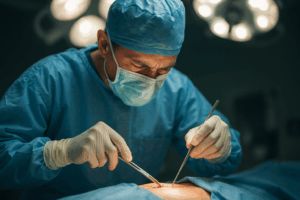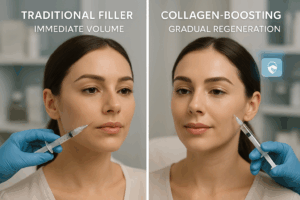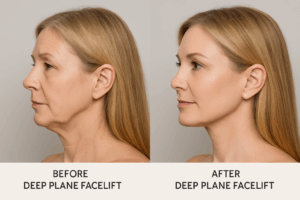Breast augmentation is a popular cosmetic procedure, but many patients are surprised to learn that achieving the desired cleavage is just as important as increasing size. While discussions about implant types and cup sizes often dominate consultations, the space between the breasts plays a crucial role in creating a beautiful, natural-looking result.
Factors Influencing Cleavage
Several factors contribute to the appearance of cleavage after breast augmentation:
Anatomical considerations:
- Distance between breasts
- Skin tightness and laxity
- Amount of existing breast tissue
Surgical techniques:
- Implant pocket adjustment
- Implant selection (type, width, and profile)
It’s important to note that cleavage appearance can vary depending on clothing and bra choices. A natural look that allows for cleavage enhancement with underwire technology often provides the most versatility.
Achieving Desired Cleavage
There is no universal standard for ideal cleavage, as it depends on individual proportions and preferences. I can employ various strategies to achieve the desired result:
For wider-set breasts:
- Adjust implant pockets to bring breasts closer together
For close-set breasts:
- Modify surgical approach to create more separation
Correcting Cleavage Post-Surgery
If you’re unsatisfied with your cleavage after breast augmentation, there are options available:
Too wide:
- Fat grafting
- Implant pocket repositioning
Too narrow:
- Implant pocket repositioning
- Placement of surgical tissue products to maintain separation
Choosing the Right Plastic Surgeon
When selecting a board-certified plastic surgeon, pay close attention to their before-and-after photos, focusing specifically on cleavage. Look for images that show the breasts without support (no bras or bikini tops) to assess the natural cleavage achieved through surgery.
Conclusion
Achieving the best cleavage for your through breast augmentation requires careful consideration of individual anatomy, surgical techniques, and personal preferences.




Recent Comments